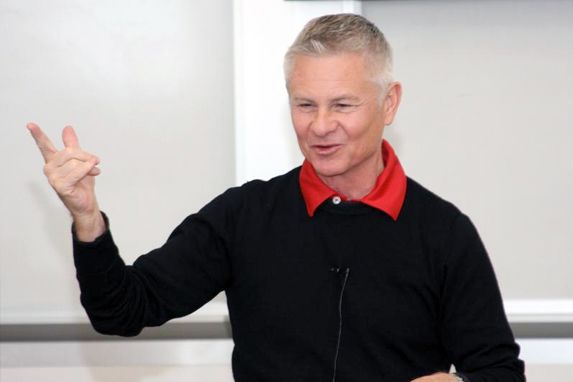Building Bridges
The importance of knowing as much as we can about our learners.
Back in the 1980s, I published a book with Cambridge University Press called The Learner-Centred Curriculum. The book was based on research I had done at the time exploring the attitudes, perceptions and beliefs of learners. The rationale for this research was that if learners are to acquire another language (or anything else, for that matter), they are the ones who have to do the learning. In designing language programs, information about learners and from learners should inform and infuse the selection of content, learning experiences and means of assessment. The processes of curriculum planning, implementation and evaluation should be a collaborative effort between curriculum designers, teachers and learners. I found that adult learners are profoundly influenced by past learning experiences, present concerns and future prospects. I also found that there were mismatches between the views of the learners and those of their teachers. Furthermore, often the teachers had no idea what learners thought, felt and believed about language and learning.
More recently, I have been experimenting with the application of these principles to younger learning. In the face of considerable skepticism, I have been exploring the extent to which young learners are able to reflect on and articulate their ideas on language and language learning. Do, they, for instance, see a foreign language as just another subject on the school curriculum or do they see it as a tool for communication? The skepticism reflected a belief that young learners are ‘blank slates’ to be inscribed upon by teachers. How could they possibly have views on abstract matters such as language and learning?
My curiosity has taken me into young learner language classrooms in different parts of the world. Recently, I had the opportunity to teach a class of ten-year olds in an elementary school in Seoul, Korea. Before the class, I mentioned my interest in the bridges that learners build between their in-class language learning and their out-of-class language use. “Oh, I was told,” you have to remember that these kids are foreign language learners. They have no use for English outside the classroom.” I was not so sure, so at one point in the lesson, I said, “I want to ask you do you ever practice your English outside of the classroom?” Kim, who was sitting with three classmates, immediately replied, “My cousin, er, my cousin live in Canada and I’m talking to my cousin in English. I said, “That’s a great way of practicing your English. And also keeping in contact with your cousin.”
I got the class to draw pictures of their out-of-class language use and got them to talk about what was going on in the pictures. Here is what happened next. DN: : So, whose is this? Several learners: Amy’s.
DN: So, can you tell us about your picture?
Amy: Tell?
DN: Yes, tell the group about your picture.
Amy: Er, er, My Mom, and I talk with Mom. (Making a talking gesture with her hand.) Talking. Talking.
DN: What sort of things do you talk about?
Amy: Er … “How are you today?”
DN: Jenny. This looks interesting. Tell us about your picture.
Jenny: I want listen to music computer. Computer. Listen to the pop song. Learners: Pop song, pop song.
Jenny: Listening pop song.
DN: Listening to pop songs. (Turning to another learner)
Andy, Can you tell us what’s happening in your picture?
Andy: I’m going to English church.
DN: Going to?
Andy: English church.
DN: English church. OK, Good. Wow, this one looks complicated. Whose is this one?
John: My father watch TV and he want some coffee and he say ‘Take some coffee or pizza” (“Get me some coffee or pizza”), and I say ‘Yes Sir!’.
DN: So, he talks to you in English at home some times.
John: Yes.
In fact, all of the learners were about to identify opportunities to use English out of class, and were able to talk about their experiences. What was striking about this phase of the lesson was the richness and diversity of the English language learning and using opportunities outside the classroom; for example with relatives in North America, exploiting media, collaborating in online games, attending social and religious events, and using English in the home. What was also striking was the fact that the teachers were unaware of the connections that the learners were making between their classroom worlds and their lives outside the classroom. In their classrooms, they were therefore unable to fully realize the dictum of a famous educator who, when asked to define education, “Education is building bridges between the known and the new.”

